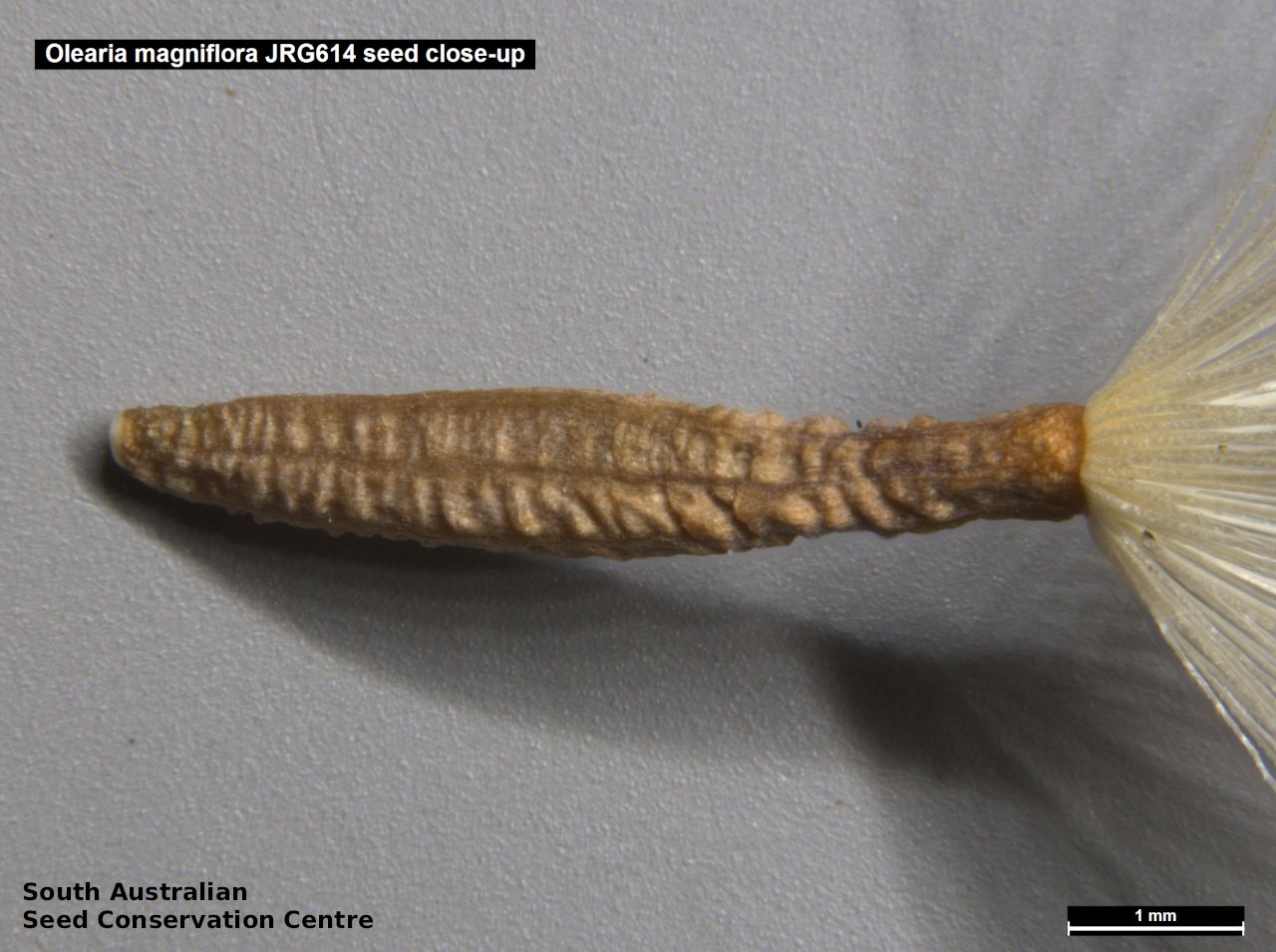
















Botanical art
Prior names
Aster magniflorus
Common names
Splendid Daisy-bush
Etymology
Olearia named after Johann Gottfried Ölschläger (1603-1671), 17th century German horticulturist and author of a flora of Halle in Germany (his name was latinized to Olearius). Alternatively, it maybe from the Latin 'olearius' pertaining to oil, from 'olea', for olive tree; alluding to the first named species resembling the olive. Magniflora from Latin meaning large flowers.
Distribution and status
Found in mallee and arid woodland communities, in the Nullabor, Eyre Peninsula and Murray regions of South Australia. Also found in Western Australia, New South Wales and Victoria. Native. Common in South Australia. Common in other states.
Herbarium regions: Nullarbor, Flinders Ranges, Eyre Peninsula, Murray, Yorke Peninsula
AVH map: SA distribution map (external link)
Plant description
Shrub to 1m high with erect stems, sparsely branched, more or less woody, glabrous, without ribs. Leaves sessile, cuneate to oblanceolate, narrowed at the base, to 18mm long and 5mm wide, glabrous, slightly viscid, dark-green with a prominent midrib and margins with 3-5-toothed at the apex. Flower head solitary, terminal on a stalk less than 1 cm long with a large mauve to purple flower with a yellow centre. Flowering between August and November. Fruits are large fluffy daisy heads containing numerous seeds. Seeds are striate brown, semi-flat achenes to 9mm long and 2mm wide with dense unequal pappus bristles to 15mm long. Seed embryo type is spatulate fully developed.
Seed collection and propagation
Collect seeds between December and January. Collect heads that are large and fluffy. Either pick off the whole heads or use your finger and pull off the seeds from the head. Mature seeds will come off easily. Place the heads in a tray for a week to dry. No cleaning is required if only pure seeds are collected. If heads are collected, then rub the heads gently with your hands to dislodge the seeds. Viable seeds will be fat and hard. Store the seeds with a desiccant such as dried silica beads or dry rice, in an air tight container in a cool and dry place. Seeds are non-dormant, viable seed should germinate readily.
| Location | No. of seeds (weight grams) | Number of plants | Date collected | Collection number Collection location | Date stored | % Viability | Storage temperature |
|---|---|---|---|---|---|---|---|
| MSB | 4,100 (8.84 g) | 50+ | 16-Oct-2007 | MJT55 Eyre Peninsula | 70% | ||
| BGA | 2,600 (7.32 g) | 50+ | 29-Oct-2014 | DJD3058 Murray | 1-Jan-2016 | 70% | -18°C |
| BGA | 3,900 (7.98 g) | 100+ | 7-Nov-2017 | JRG614 Murray | 30-Jun-2018 | 75% | -18°C |
Number of plants: This is the number of plants from which the seeds were collected.
Collection location: The Herbarium of South Australia's region name.
% Viability: Percentage of filled healthy seeds determined by a cut test or x-ray.